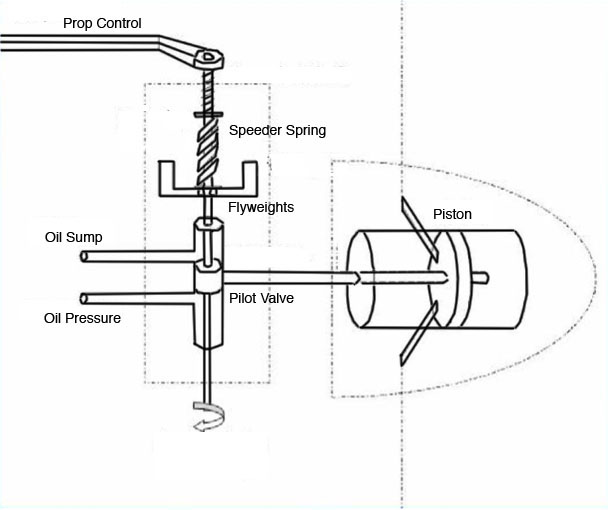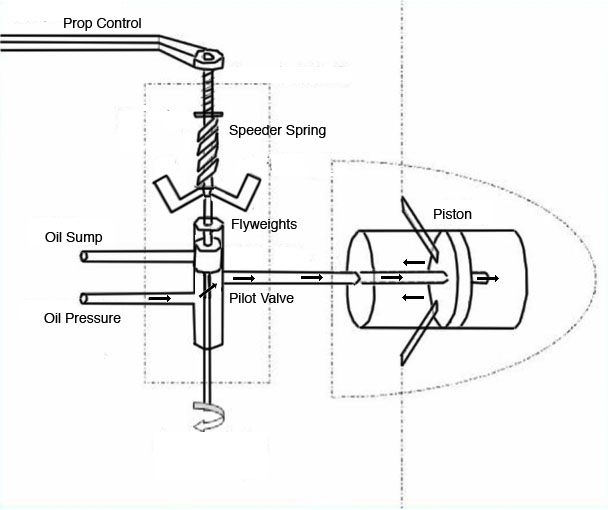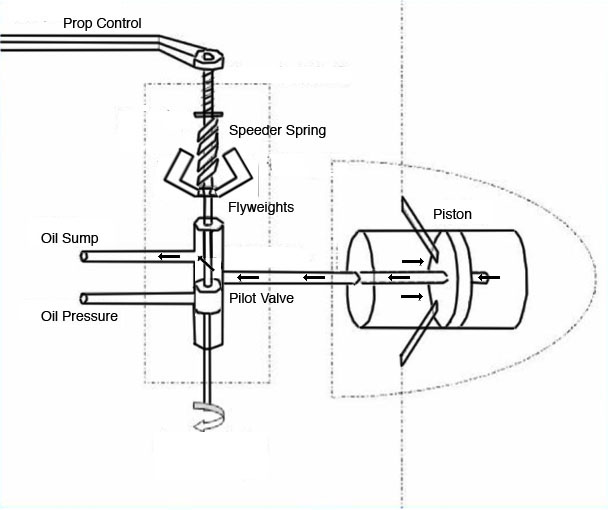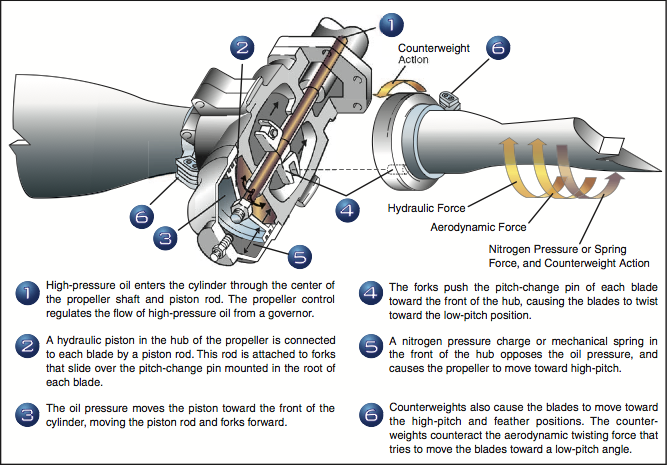Propellers and Governors
In most single-engine, piston airplanes, a constant-speed propeller is controlled by a governor which regulates oil pressure flowing to and from the propeller hub. The flow of oil pushes on a piston, which is mechanically linked to the blades, allowing them to change pitch during flight. More oil pressure drives the pitch of the blades higher, which decreases RPM.
Propeller Governor
A constant-speed propeller uses a governor to control the RPM of the engine. It does so with the help of mechanical linkage from the propeller control knob/lever to a speeder spring, centrifugal flyweights, and a pilot valve with allows the flow of oil either from or to the propeller hub.
The propeller control in the cockpit compresses or relaxes the speeder spring, which affects the force exerted on the flyweights. As those move either out or in, the mechanical linkage to the pilot valve causes it to move in a direction which allows oil to flow either into or out of the propeller hub, moving a piston, which forces the blades to higher or lower pitch.
On Speed Condition
In this condition, the centrifugal force on the flyweights is equal to the force of the speeder spring. Thus the pilot valve is neutral, closing off both the oil sump and pressure lines, allowing no oil to flow to or from the propeller hub.

Over Speed Condition
As the propeller speeds up, the increased centrifugal force causes the flyweights to move out, forcing the pilot valve to rise. This opens the the way for the oil pressure line to force oil into the propeller hub, thus increasing the blade pitch and decreasing the RPM of the engine. As the propeller slows to the proper RPM, the decreased centrifugal forces on the flyweights move them back to neutral and the pilot valve moves in conjunction closing off the oil pressure and sump lines.

Under Speed Condition
As the propeller slows down, the decreased centrifugal force causes the flyweights to move in, forcing the pilot valve to drop. This opens the path back to the oil sump, which accepts oil from the propeller hub, decreasing blade pitch and increasing RPM. As the propeller slows to the proper speed, the decreased centrifugal forces on the flyweights move them back to neutral and the pilot valve moves in conjunction closing off the oil pressure and sump lines.


Off the Governor
At lower manifold pressure settings, the propeller may go "off the governor", which simply means the engine isn't producing enough power to allow the governor to properly regulate the RPM. In this state, the flyweights will be deflected fully inward, and the propeller now acts as if it were fixed pitch. The governing range is generally indicated by the green band on the manifold pressure gauge.